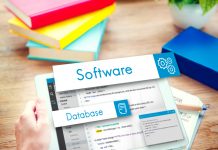For many people, doing their taxes is one of the biggest financial transactions that they will make all year. It is also one of the most complicated transactions that they will make. Tax filing season can induce a lot of stress and anxiety revolving around the rules and regulations of reporting and filing. For a majority of people, ensuring that they are filing correctly and getting back the right amount of money are the biggest challenges when doing their taxes. If they own a company with several assets, the process could become even more complicated.
Even though the tax process can be confusing and difficult, there are innovative solutions that can help ease the anxiety. Aside from hiring a professional to complete your taxes, there wasn’t a lot of help for filing until recently. Today, new technology has changed how we do business by enhancing our ability to get more done with greater accuracy. Algorithms used in artificial intelligence and machine learning have introduced us to the future of simplified processes and innovation. From design and engineering to accounting and education, computers are automating processes and operations across a wide variety of areas. Tax preparation is no exception.
New computer learning and software can now help simplify the often tedious and complicated process of completing and filing taxes. As a result, tax season no longer has to be a time of dread or concern. Let’s take a look at how machine learning is changing tax season.
What is machine learning?

Machine learning can be complex in how it works and varies depending on the task and assigned algorithm. At its core, however, machine learning is the process of training a computer to look at data and identify patterns. The machine then uses those patterns to make predictions and complete assigned tasks. Any task that depends upon data points and rules can be automated with machine learning. From responding to customer service calls and reviewing resumes to completing taxes, computers are now able to complete complex tasks with the benefits of artificial intelligence and machine learning.
Software designers and other professionals must develop a machine learning strategy to find the right framework to accomplish required tasks. With supervised learning, the computer is provided with a labeled set of data that allows it to learn how to do human tasks. Unsupervised learning involves unlabeled data, and algorithms must extract previously unknown patterns and insights. Semi-supervised learning uses a partially labeled data set to allow the computer to perform tasks and understand how to interpret unlabeled data. Finally, reinforced learning allows the machine to observe its data environment to make predictions to minimize risks or maximize rewards.
How is tax preparation software impacted?

Tax preparation software uses machine learning and artificial intelligence to help calculate a user’s tax rates, deductions, and tax liability. Tax software can learn from entered data to ensure that your taxes are compliant with all IRS regulations. Tax programs can pull data from various sources for accurate, better predictions and filing outcomes using algorithms and deep learning. Additionally, many taxpayers today have gotten involved with the cryptocurrency market, which can complicate tax prep even further. Specialized software can pull data from exchanges and help you estimate your taxes owed on cryptocurrency sales and purchases. You can look at resources like Taxbit review to help get a better picture of this new tax software.
With every upcoming tax season, many filers become overwhelmed and anxious. With algorithms and learning, however, software programs can help to automate the tax prep process. With machine learning, customers can be sure that they are getting the maximum refund while filing accurate and detailed taxes.





